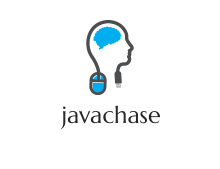Every Java user interface class is a JavaBeans component. Understanding JavaBeans will help you to learn GUI components.JavaBeans is a software component architecture that extends the power of the Java language by enabling well-formed objects to be manipulated visually at design time in a pure Java builder tool, such as NetBeans and Eclipse.
JavaBean Rules :
JavaBean Rules :
- A JavaBean must have a public, no-argument constructor (a default constructor). This is required so that Java frameworks can facilitate automated instantiation.
- The JavaBean class attributes must be accessed via accessor and mutator methods that follow a standard naming convention (getXxxx and setXxxx, isXxxx for boolean attributes). It’s important to note that an “attribute” is a named memory location that contains a value, while a “property” refers to this set of methods used to access an attribute. This allows frameworks to automate operations on attribute values.
- The JavaBean class should be serializable. This allows Java applications and frameworks to save, store, and restore the JavaBean state.That means a bean must implement the Serializable interface to ensure a persistent state.
package player;
// The class is serialized for IO operations
public class PersonBean implements java.io.Serializable {
// attributes declared as private
private String name;
private boolean counter;
// Default Constructor
public Person() { }
// getXxx to access the name attribute
public String getName() {
return this.name;
}
// setXxxx to mutate the name attribute
public void setName(String name) {
this.name = name;
}
// isXxxx to access boolean attribute
public boolean iscounter() {
return this.counter;
}
// setXxx to mutate boolean attribute
public void setCounter(boolean counter) {
this.counter = counter;
}
}
import player.PersonBean;
/**
* Class TestPersonBean
*/
public class TestPersonBean {
/**
* Tester method for class PersonBean
*/
public static void main(String[] args) {
PersonBean person = new PersonBean();
person.setName("Bob");
person.setcounter(false);
// Output: "Bob [alive]"
System.out.print(person.getName());
System.out.println(person.isCounter() ? " [counter]" : " [alive]");
}
}
Advantages:
- The properties, events, and methods of a bean that are exposed to another application can be controlled.
- A bean may register to receive events from other objects and can generate events that are sent to those other objects.
- Auxiliary software can be provided to help configure a java bean.
- The configuration setting of bean can be saved in a persistent storage and restored at a later time.
- A class with a nullary constructor is subject to being instantiated in an invalid state. If such a class is instantiated manually by a developer (rather than automatically by some kind of framework), the developer might not realize that the class has been improperly instantiated. The compiler can’t detect such a problem, and even if it’s documented, there’s no guarantee that the developer will see the documentation.
- Having to create a getter for every property and a setter for many, most, or all of them can lead to an immense quantity of boilerplate code.
